As I did last year, here’s a run-down of the comics and comics-related stuff I read this past year. As will be obvious as you look through the list, this is a list of things I read this year, not things that came out this year. It’s also not a “best of” list. I have, though, highlighted a few items that I thought were exceptionally great and/or interesting. I read a few French-language things and I indicated them with a parenthetical “FR” so no one winds up potentially frustrated looking for them in the U.S.
Rusty Brown – Chris Ware
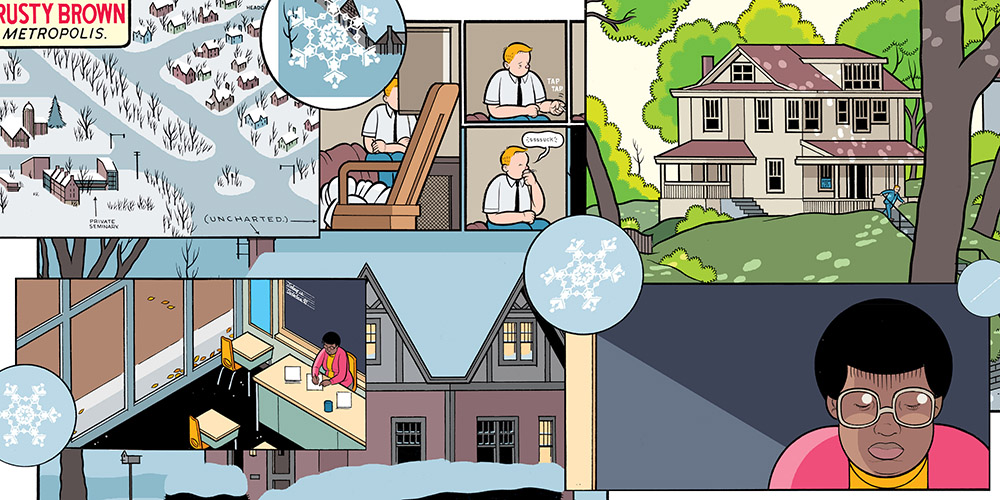
I’m continually baffled by the apparent “Chris Ware backlash” of the last decade or so. Comics-wise, Ware is operating both at a formal level and a craft level so far above pretty much anyone else working today that it’s flat-out astonishing. Rusty Brown is a stunning work, even for Ware. The Jordan Lint chapter in particular stands out as something that the medium has really never seen before. And, attention, haters: the book ends on a decidedly positive note. The first book I read this year and one of the best.
L’age D’or (FR) – Cyril Pedrosa

Another of my absolute favorites of 2020. (Since I initially read this, it’s been released in English by First Second as The Golden Age.) The story here is a solid fantasy/medieval deal with a bit of an unusual twist. What puts this at the top of my 2020 list, though, is the amazing artwork by Cyril Pedrosa–deliberately designed as a sort of mash-up of his natural drawing style with Pieter Bruegel and medieval tapestries with their distinctive gold and silver weft threading. He also employs some interesting–and distinctively medieval–visual storytelling, as I discussed in an earlier post this year.
Making Comics – Lynda Barry
Lessons Drawn – ed. David D. Seelow
Hicotea: A Nightlights Story – Lorena Alvarez
Voltaire très amoureux, tome 2 (FR) – Clément Oubrerie
Little Lulu: Working Girl – John Stanley

As a huge Little Lulu fan, I’ve been eagerly awaiting this new series of collections from D&Q–and this first volume didn’t disappoint. Yeah, sure, it’d be great if they were doing a complete collection, but based on the stories selected here for the first volume, they’re making pretty solid picks–and this is all pretty early stuff; the best is yet to come. It does contain one of the all time classic Tubby stories–the one where a couple in a restaurant think he’s a starving child, treat him to a dinner, and then have their kindness completely abused. The production values and ancillary stuff really shine here as well: it’s a big beautiful hardcover with the original largely-unretouched coloring, and it’s got a couple of good essays–including one by Margaret Atwood.
The Goat Getters – Eddie Campbell
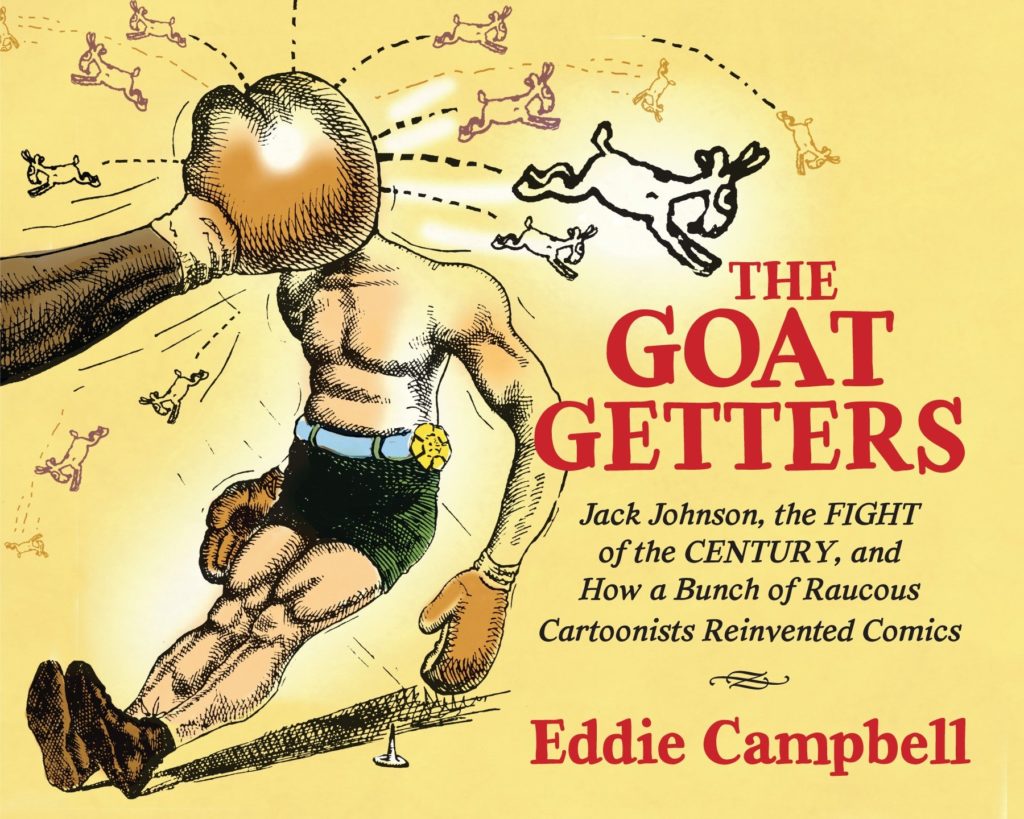
Eddie Campbell isn’t just one of the medium’s greatest cartoonists, he’s one of its best writers. In this heavily-researched book (shout-out to Columbus’s own Billy Ireland Cartoon Library and Museum!) Campbell explores a largely-forgotten genre of the early days of North American cartooning: sports cartooning. Much like other now-brushed aside corners of cartooning–“funny animal” comics, romance comics, etc.–sports cartooning was incredibly important to the development of the medium and Campbell’s tracing of sports cartooning’s origin and influence is fascinating.
Witch Hat Atelier, vol 3 – Kamome Shirahama
Becoming Dr. Seuss: Theodor Geisel and the Making of an American Imagination – Brian Jay Jones
Fuzz & Pluck: The Moolah Tree – Ted Stearn

I’m not sure why it took me so long to get around to reading The Moolah Tree. Ted Stearn–who sadly passed away this year–was a fantastic cartoonist. He didn’t put out work very often, but when he did it was always amazing stuff, and this (unfortunately) final installment of the Fuzz & Pluck series is, in fact, amazing. As with all of Stearn’s work, a lot of the appeal is the story’s subtle mixture of humor and pathos. The Moolah Tree is maybe a bit more amiable and less overtly bizarre than the two earlier collections, but with the scales tipped in that direction, this book has an abundance of heart and charm that puts it in my definite top five reads of 2020–Ted’s art here is the best he’s done by far.
A Bride’s Story, vol 6 – Kaoru Mori
The Graphic Novel an Introduction – Jan Baetens & Hugo Frey
Word of Edena – Moebius
Schulz and Peanuts: A Biography – David Michaelis
Free Shit – Charles Burns
Reincarnation Stories – Kim Deitch
A Gift for a Ghost – Borja González
Corto Maltese, The Ethopian – Hugo Pratt
The Columbus Scribbler, #4, #5 – Various
Pathways to Fantasy – various
Cartoon Monarch: Otto Soglow & The Little King – Otto Soglow
Avec Hugo (FR) – Silvina Pratt
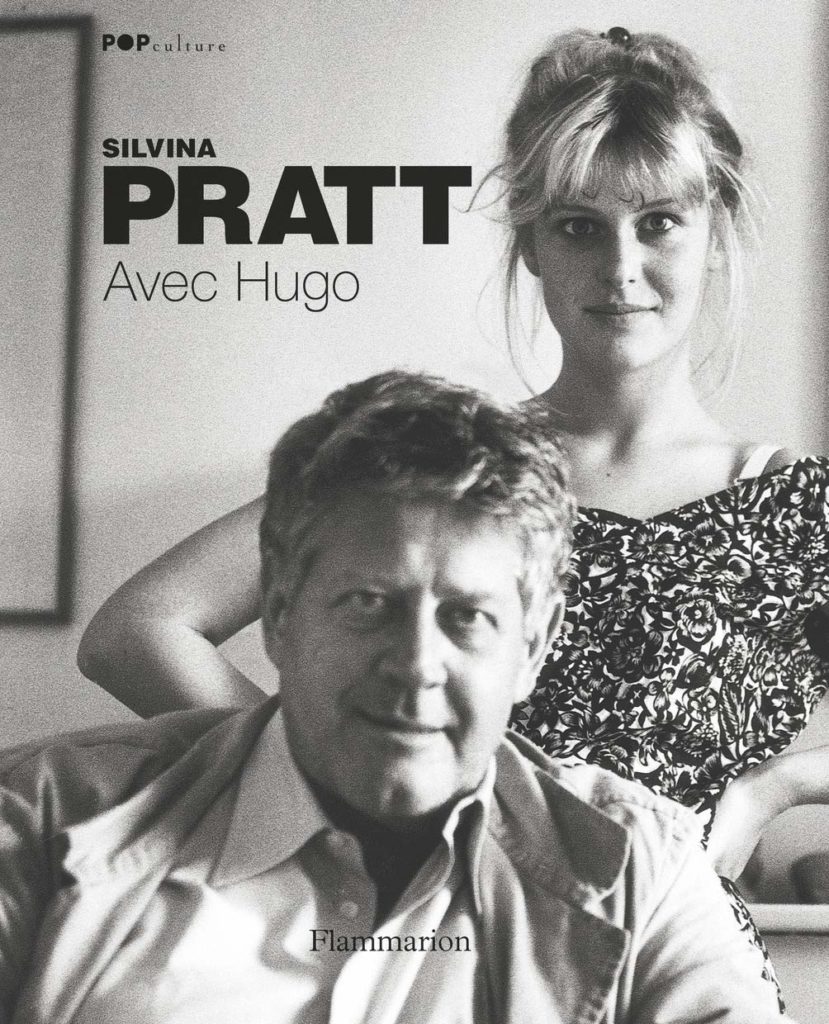
I probably wouldn’t have finished this if it weren’t for the benefit (hopefully) of getting some practice reading French. This book, written by his daughter Silvina–and ostensibly a memoir about cartoonist Hugo Pratt–isn’t bad; there’s just not that much information in it about the one thing you most want to know about in reference to Hugo Pratt: Corto Maltese. I definitely learned some things about Pratt’s life and career that I didn’t know before (a few of them things I wish I didn’t know, to be honest) but there’s really only passing mention of the nuts and bolts history of Pratt the cartoonist and of the evolution and history of his life’s work with Corto. We (still) really need a good biography of Hugo Pratt.
Daniel Clowes: Original Art – Daniel Clowes

I own exactly two of these giant “artist edition” books (I wish I owned more, they’re just kinda pricey) but this is one that I considered a must-buy. If–like me–you’re a semi-obsessive Clowes fan, hear me now and believe me later: suck it up financially and buy this. Not only will you (like me) spend weeks going through this page-by-page just gawking at Clowe’s linework and speculating about every pasted-on head and whited-out mark, but you’ll marvel at the obsessive production values of the book itself–could it be otherwise with Daniel Clowes at the helm?
House of X/Powers of X, X-Men #1 – #8 – Jonathan Hickman
The Winter of the Cartoonist by Paco Roca
Kerry and the Knight of the Forest – Andi Watson
Paul at Home – Michel Rabagliati
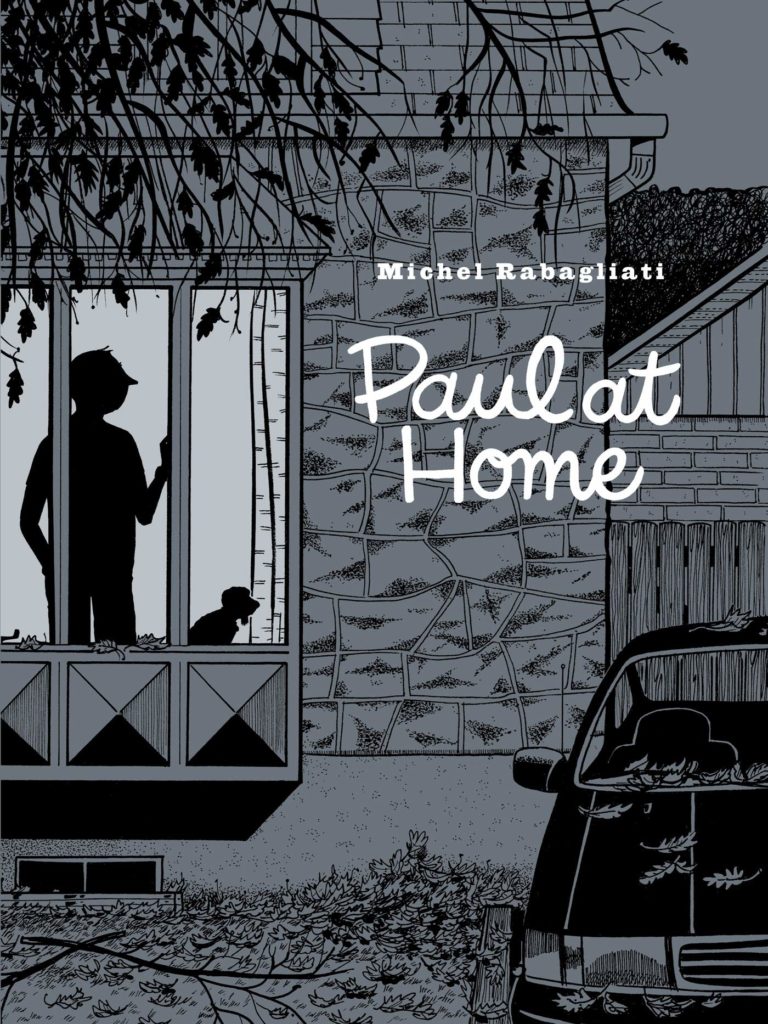
Another on of my faves of 2020. (Ok, ok, I guess I do have a “top four” at least: Rusty Brown, L’age d’or, Fuzz & Pluck: The Moolah Tree, Paul at Home.) The cartooning here is incredible–but at this point that’s “par for the course” from the amazing Michel Rabagliati. What most people seem to be noting about this book is the (supposedly) more dour and bitter tone–but, honestly, that’s not how it read to me. Perhaps it’s because I’ve recently been through a few of the major life events that the titular Paul from the series has just been through when we join him again in Paul at Home, but a lot of the things reviewers are citing as examples of this new, grouchier tone seemed to me to be being played for laughs–perhaps because I’m recognizing them as hilariously spot-on. (And, I’d also probably argue that the previous volumes of the Paul series aren’t really as happy-go-lucky and wistful as we often recall them to be.)
Les Cahiers de la BD, #6, #11 (FR) – ed. Vincent Bernière
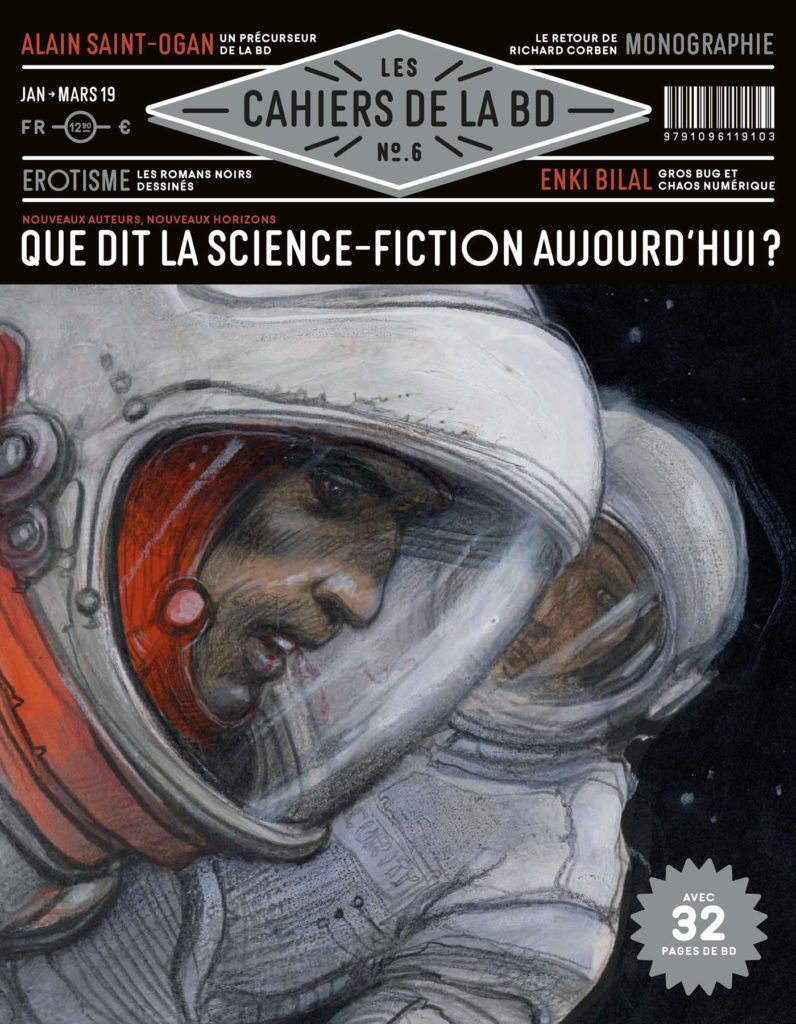
In 2020 I went ahead and subscribed to this French comics mag and from the few issues I’ve read so far, I can say that I wish we had a print comics mag like this in the U.S. (Do we even have a general interest comics magazine at all?) Far more substantive and less goofy than something like Wizard, but not as stodgy and insular as The Comics Journal, Les Cahiers de la BD is sort of the comics equivalent of something like Spin or Mojo at their best–the closest English language analog I can think of is the sadly long-gone Comic Art magazine.
Death to the Universe: The American Mainstream – Matt Seneca

If you can get hold of this collection of comics writing by Matt Seneca you should (it’s sold out online, as far as I can tell). Seneca’s a great writer of comics criticism/analysis (you may know him from the Comic Books are Burning in Hell podcast) and the premise of this collection is fascinating: he’s examining the medium by looking at a series of seven commercial failures–dollar bin finds featuring some of the greats like Kirby, Wood, Ditko, and Toth.
Les Beaux Étés, Tome 3 – Mam’zelle Estérel (FR) – Zidrou and Jordi Lafebre
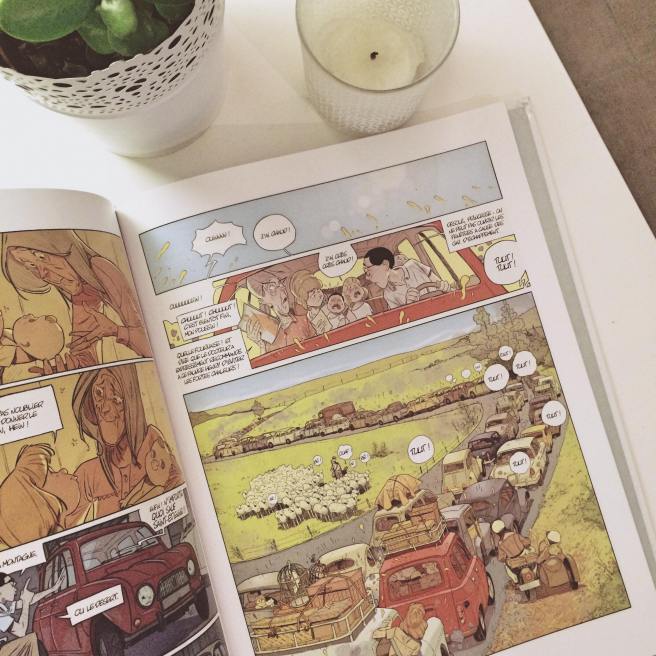
While story-wise this volume doesn’t pack anywhere near the emotional heft of the first installment, it’s a bit more substantive than the previous one. But, honestly, the reason to read this is Jordi Lafebre’s gobsmacking artwork. Pretty much no one working today has the mastery of facial expression, gesture, pose, and character design that Lafebre does. He’s easily one of the ten (five?) best working cartoonists today. Note: these are available digitally in English from Europe Comics.



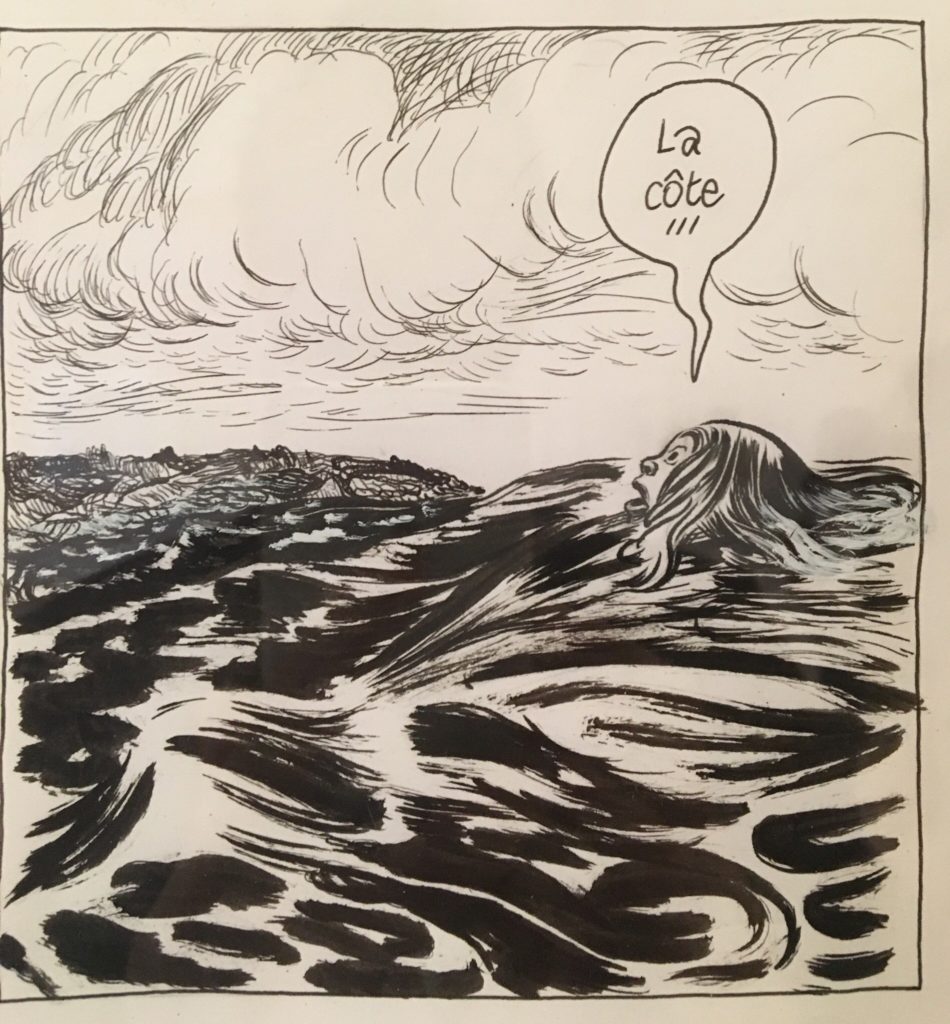




























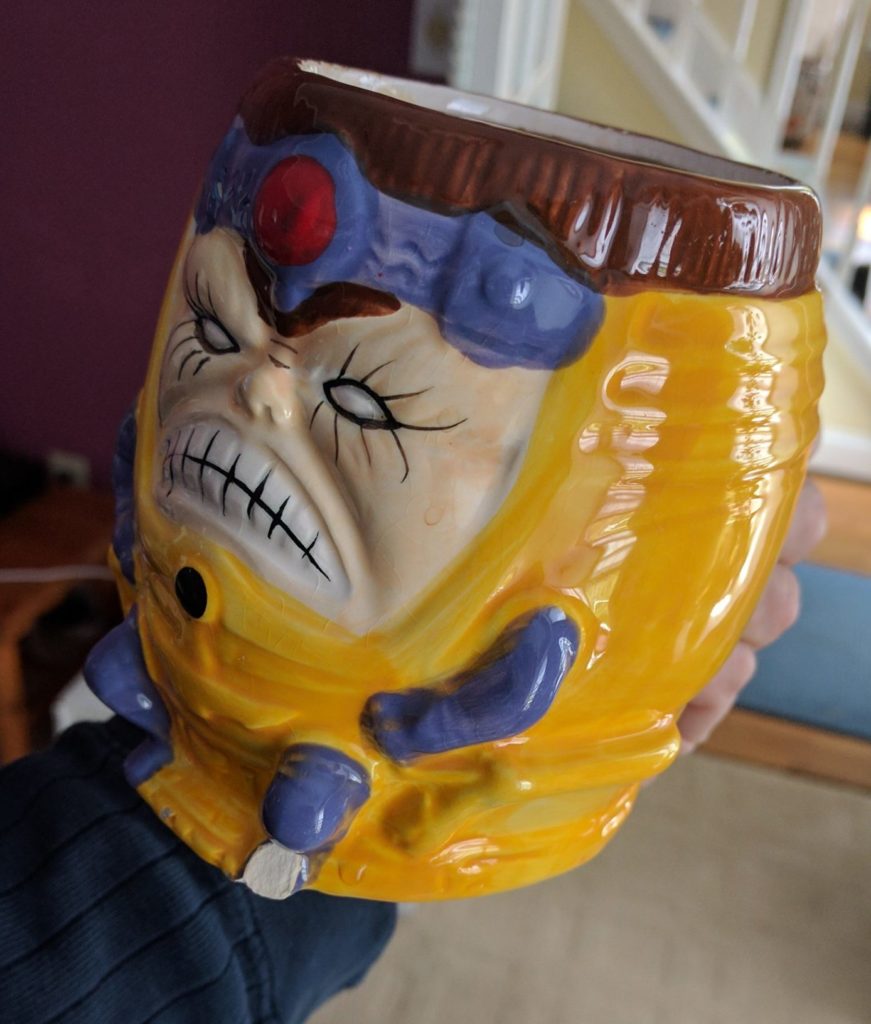









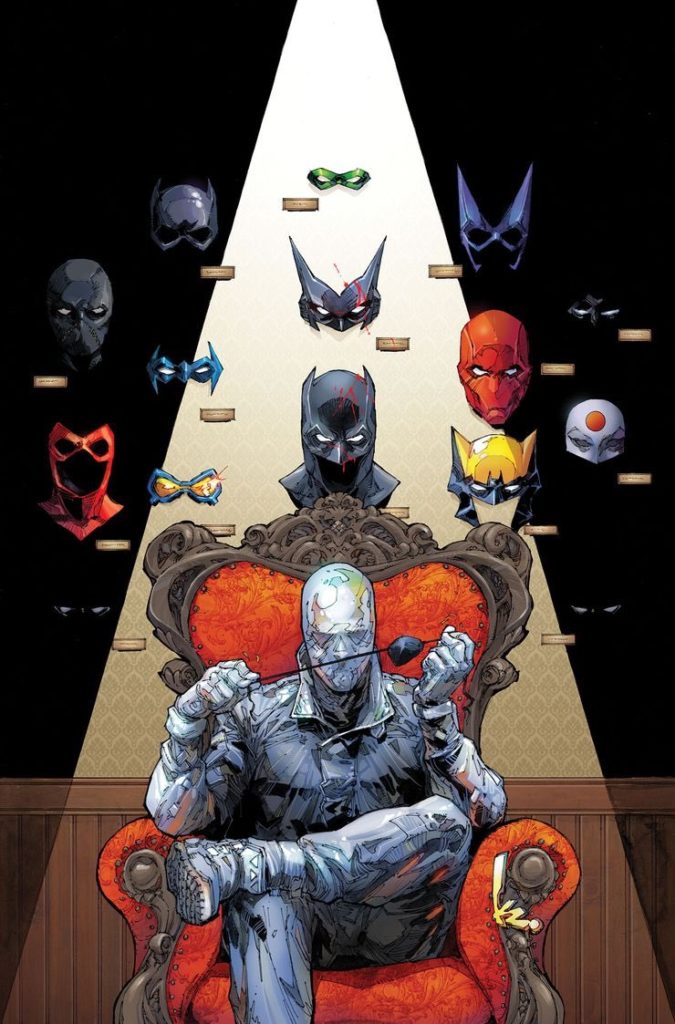




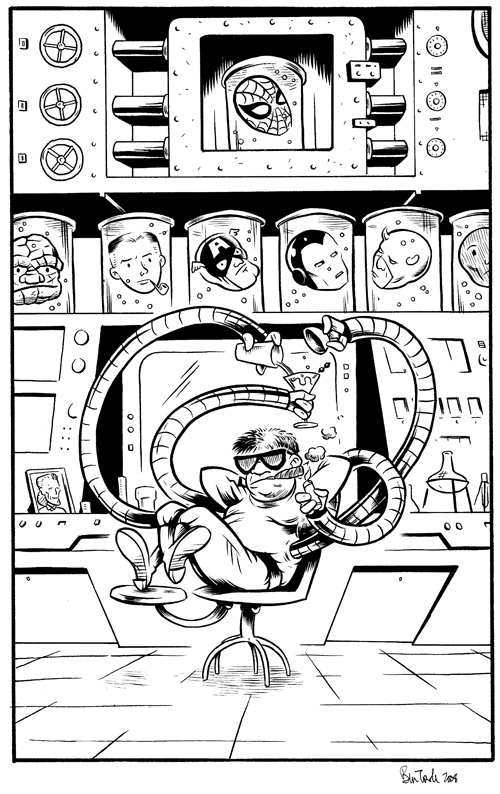
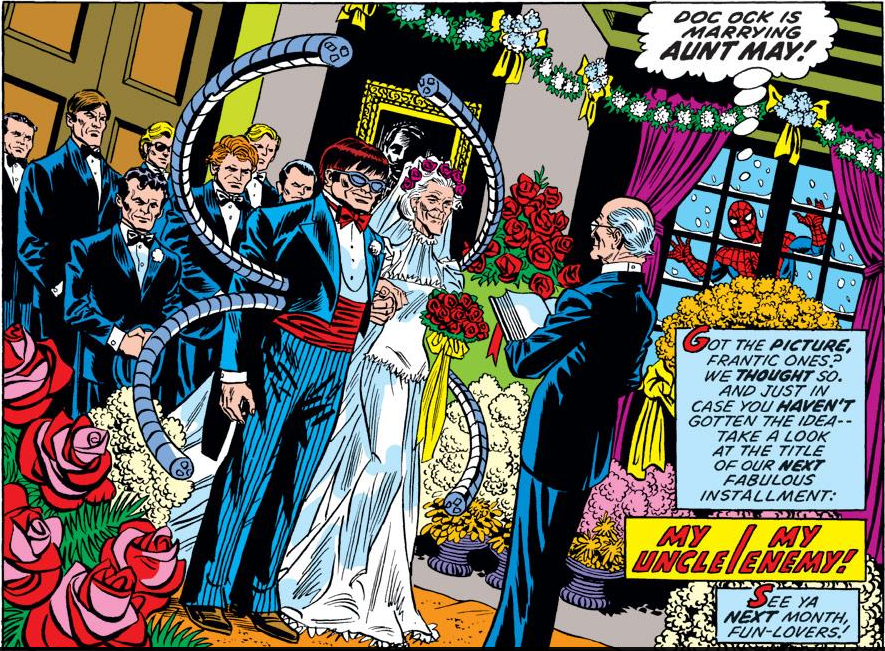
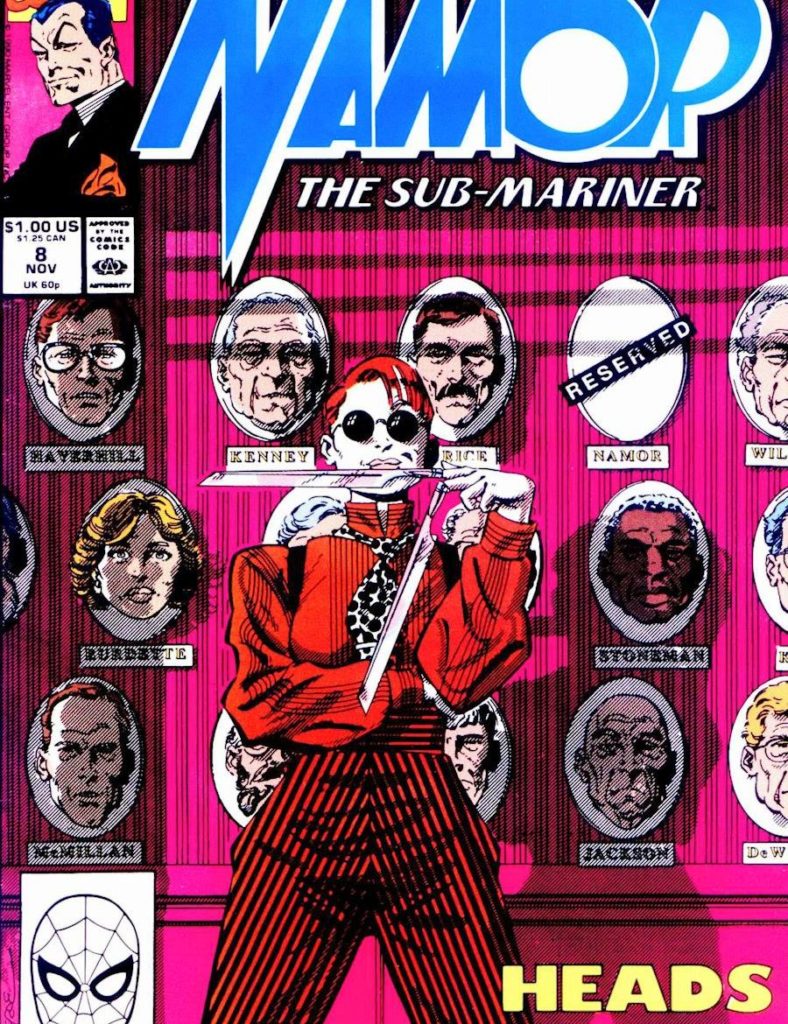
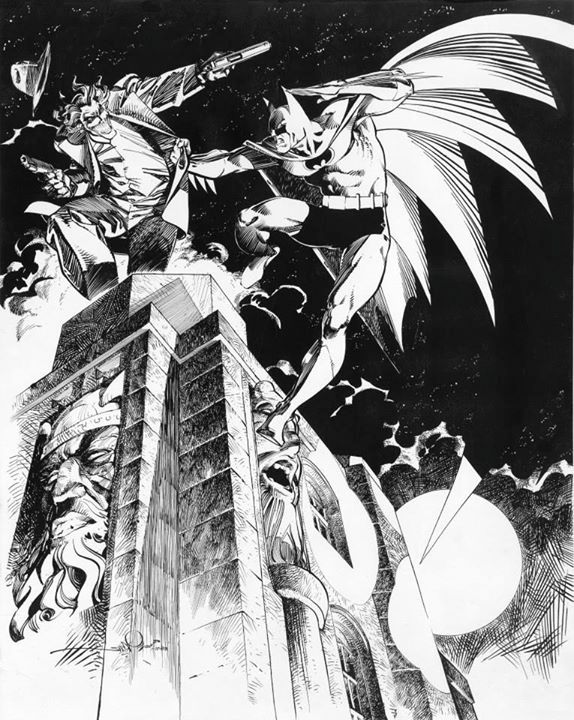
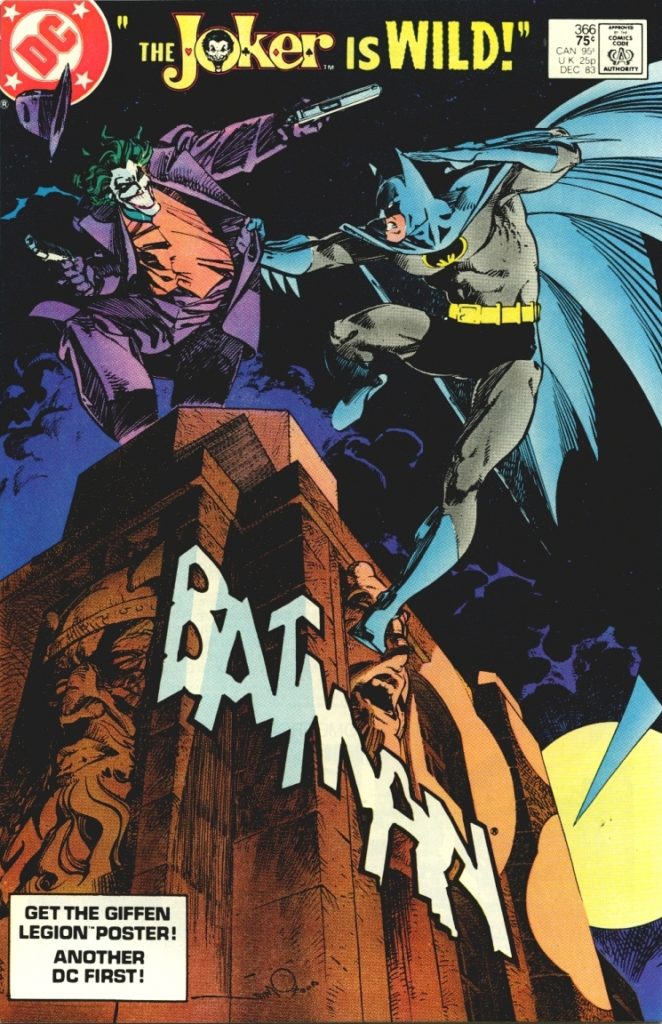
Recent Comments